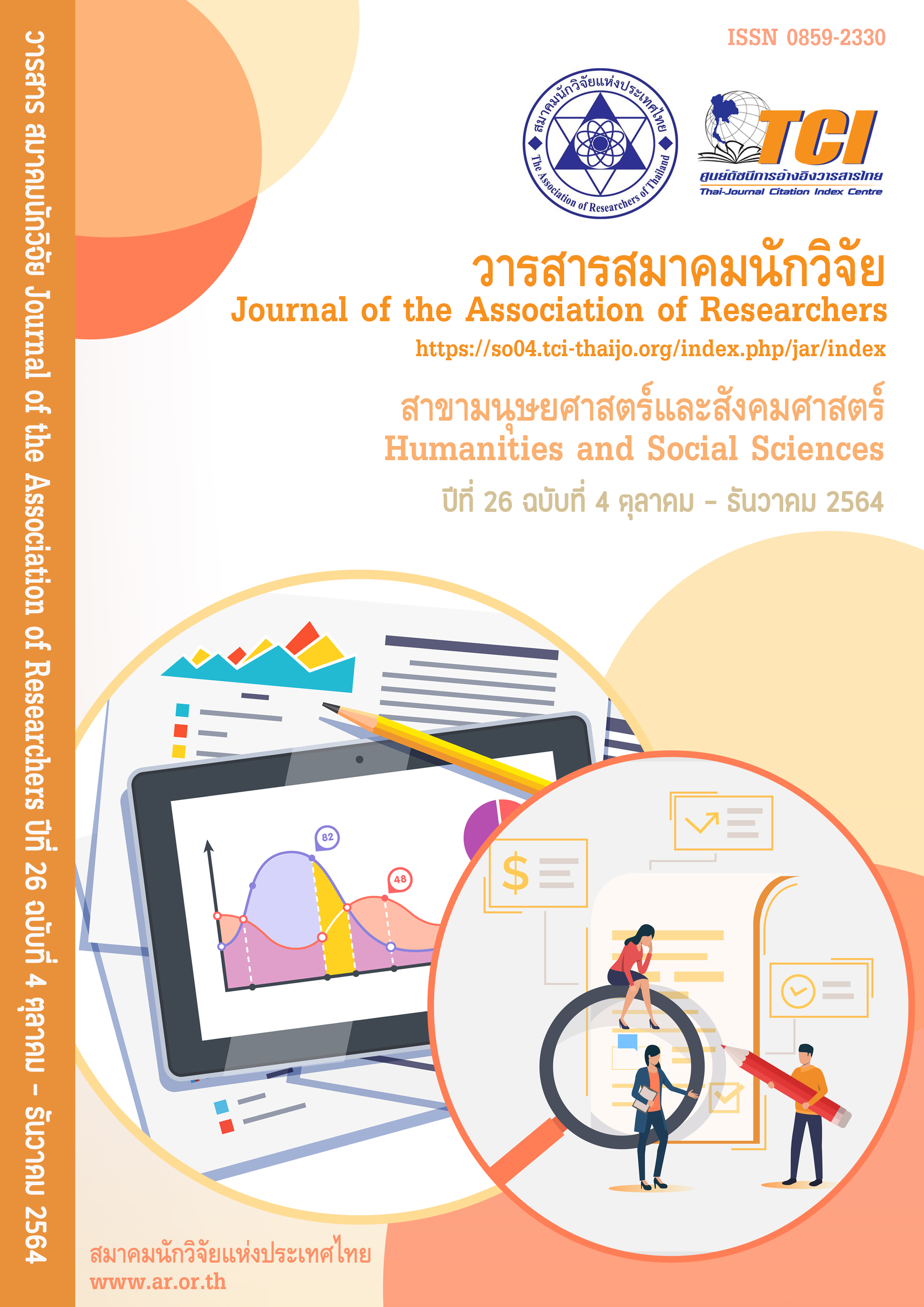The Monkey Habitats in the Community Environments of the Historical City: the Commercial Area in Lop Buri Province
Main Article Content
Abstract
The purposes of this research study are to study the monkey habitats in the environments of the Urban Community and to provide the guidelines for developing the environments of urban communities with the monkey habitats through the participatory process of stakeholders using qualitative research method. It was found that the Lop Buri old town was an architectural, archaeological, and cultural heritage with the commercial area and the monkey habitats. The monkeys did not have natural hunters, and they were fed by humans. The monkeys' welfares were the belief that the monkeys had good relationships with sacred sites, Lop Buri's legends, and its history. The monkeys were the images of the province. The monkeys had friendly relationships with the humans. The monkeys were the tourism resources. The money was also reserved for animals. The physical factors of the monkeys' lives were living at the envelope of commercial buildings, historic sites and sacred places, the footpaths, the railways' surroundings, the yards of the historic sites, and the feeding areas for the monkeys. The monkeys had the routes along the footpaths. However, the consumption behaviors of money affected the environment. As a result, there were problems with dirtiness, unhygienic conditions, and harm from feeding behavior disorder. Therefore, the community environments should be developed by implementing the strategy, "the people" (understands)/ the city (is clean, hygienic and safe)/ the monkeys (are happy)". In other words, the people inside and outside the community have to understand and cooperate with feeding the money without causing environmental problems. The city has to systematically manage the foods of the monkeys, and the monkeys must have enough food and animal welfares for living.
Article Details

This work is licensed under a Creative Commons Attribution-NonCommercial-NoDerivatives 4.0 International License.
บทความที่ปรากฏในวารสารนี้ เป็นความรับผิดชอบของผู้เขียน ซึ่งสมาคมนักวิจัยไม่จำเป็นต้องเห็นด้วยเสมอไป การนำเสนอผลงานวิจัยและบทความในวารสารนี้ไปเผยแพร่สามารถกระทำได้ โดยระบุแหล่งอ้างอิงจาก "วารสารสมาคมนักวิจัย"
References
สิรินิมิตร บุญยืน และคณะ. (2561). รายงานผลการปฏิบัติตามมาตรการป้องกันและแก้ไขผลกระทบสิ่งแวดล้อม และมาตรการติดตามตรวจสอบผลกระทบสิ่งแวดล้อม โครงการระบบรถไฟทางคู่เพื่อการขนส่งและการจัดการโลจิสติกส์ (ระยะที่ 1) แนวเส้นทางลพบุรี-ปากน้ำโพ. กรุงเทพฯ : บริษัท เอส.พี.เอส. คอนซัลติ้ง เซอร์วิส จำกัด.
อุมาภรณ์ บุพไชย. (2545). รายงานการศึกษาและสำรวจภูมิทัศน์เมือง: กรณีศึกษาพื้นที่ตามแนวถนนบำรุงเมือง เขตพระนคร กรุงเทพมหานคร. กรุงเทพฯ: คณะสถาปัตยกรรมศาสตร์ มหาวิทยาลัยศิลปากร.
Burton, F. D. (2002). Monkey king in China: Basis for a conservation policy? Cambridge studies in biological and evolutionary Anthropology, 137-162.
Chauhan, A., and Pirta, R. S. (2010). Socio-ecology of two species of non-human primates, rhesus monkey (macaca mulatta) and hanuman Langur (semnopithecus entellus), in Shimla, himachal pradesh. Journal of human ecology, 30(3), 171-177. Retrieved from doi: 10.1080/09709274.2010.11906286
Fletcher, D. (2019). An overview Urban wildlife. Retrieved from https://aiam.org.au/resources/Documents/1994%20UAM/PUB_Pro94_DonFletcher.pdf
Hadidian J. & S. Smith. (2018). Urban Wildlife. Retrieved from https://www.wellbeingintlstudiesrepository.org/cgi/viewcontent.cgi?article=1010&context=sota_2001
Jones-Engel, L., Engel, G., Gumert, M. D., & Fuentes, A. (2011). Developing sustainable human–macaque communities. In Fuentes, A., Jones-Engel, L. and M. D. Gumert (Eds.), Monkeys on the edge: ecology and management of long-tailed macaques and their interface with humans (295-327). Cambridge: Cambridge University press.
Leedy, D. L., & Adams, L. W. (1984). A Guide to Urban Wildlife Management. National Institute for Urban Wildlife. Columbia, Maryland, USA.
Mathur, R., & Manohar, B. R. (1990). Density of macaca mulatta and presbytis entellus in the old city of Jaipur: a three year survey. Applied animal behaviour science, 27(4), 351-361. Retrieved from doi: https://doi.org/10.1016/0168-1591(90)90130-6
Srivastava, A., & Begum, F. (2005). City monkeys (Macaca mulatta): A study of human attitudes. Commensalism and conflict: The human-primate interface, 258-269.
Theptha. S.(2016). Management of Creative Tourism for Cultural Heritage inTourism Destinations of Lop Buri Watershed. Academic Journal, Buriram Rajabhat University (Humanities and Social Sciences), 8 (Special issue), 499-510
UNESCO. (2020). New Life for Historic Cities: The Historic Urban Landscape Approach Explained. Retrieved from https://whc.unesco.org/uploads/news/documents/news-1026-1.pdf
Watanabe, K., & Muroyama, Y. (2005). Recent expansion of the range of japanese macaques, and associated management problems (pp. 313-331).
Boonyuen S. et al. (2002). Environmental monitoring report and monitoring compliance in accordance with environmental impact statements. The project double-track railway for transportation and logistics (Phase 1) Lopburi - Pak Nam Pho Track. Bangkok: S.P.S. Consulting Service Company Limited. (in Thai)
Pupphachai. U. (2018). A study of urban landscape survey: Case study of Bamrungmuang street strip, Phra Nakhon District, Bangkok. Bangkok: Faculty of Architecture, Silpakorn University. (in Thai)


